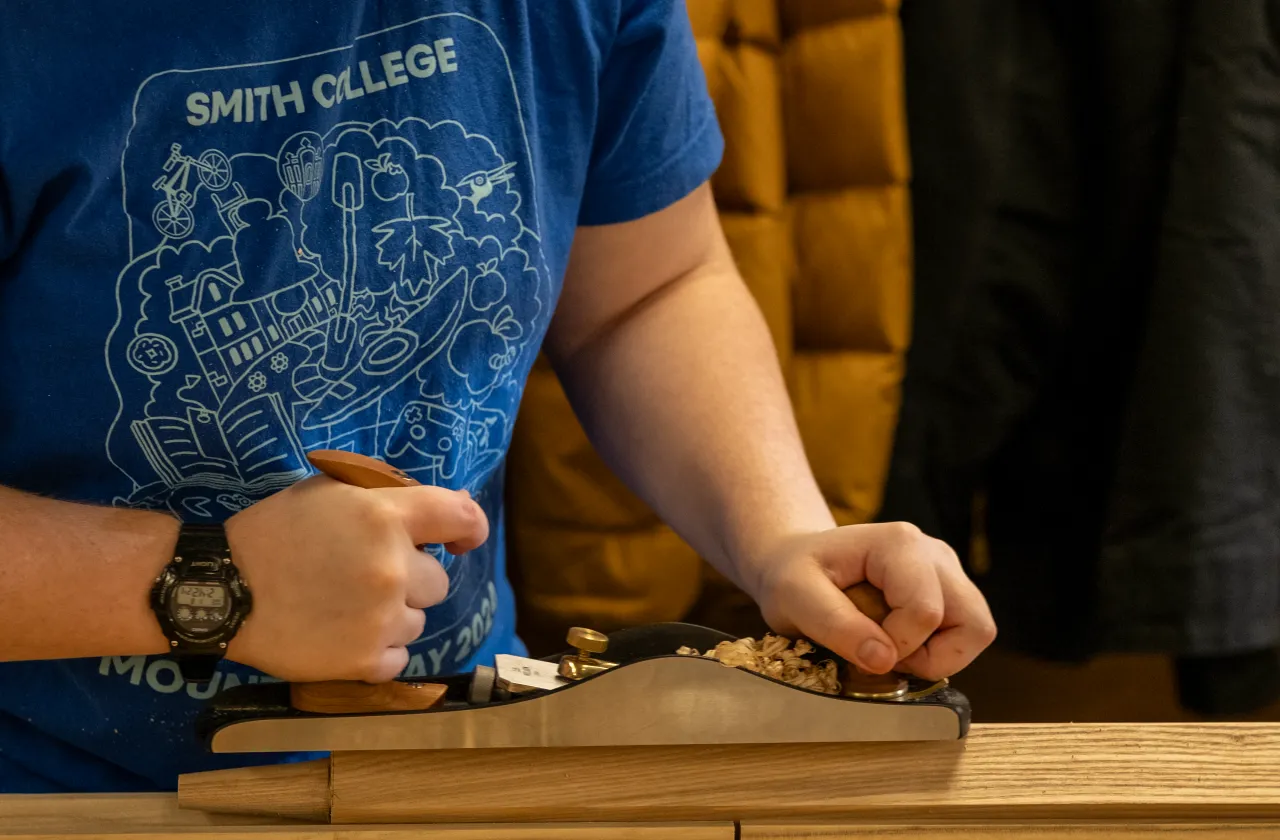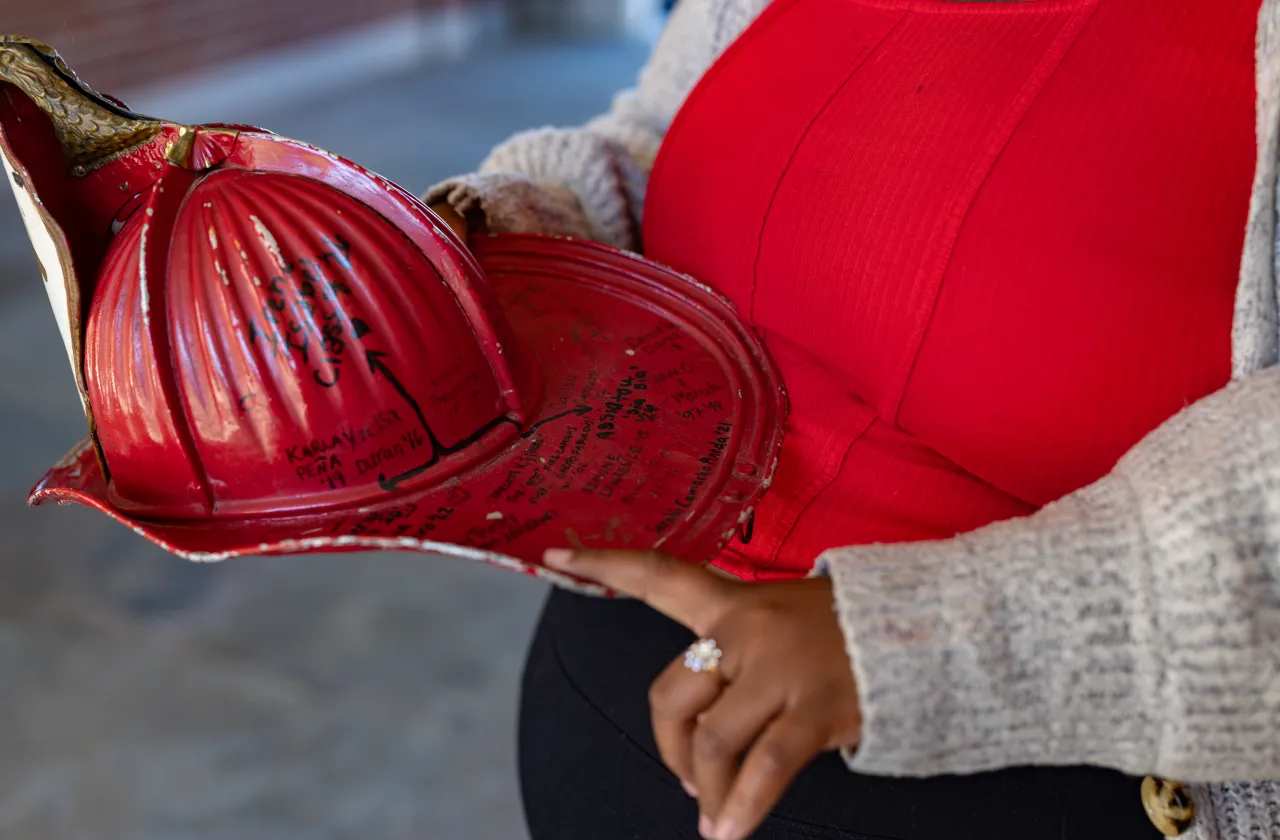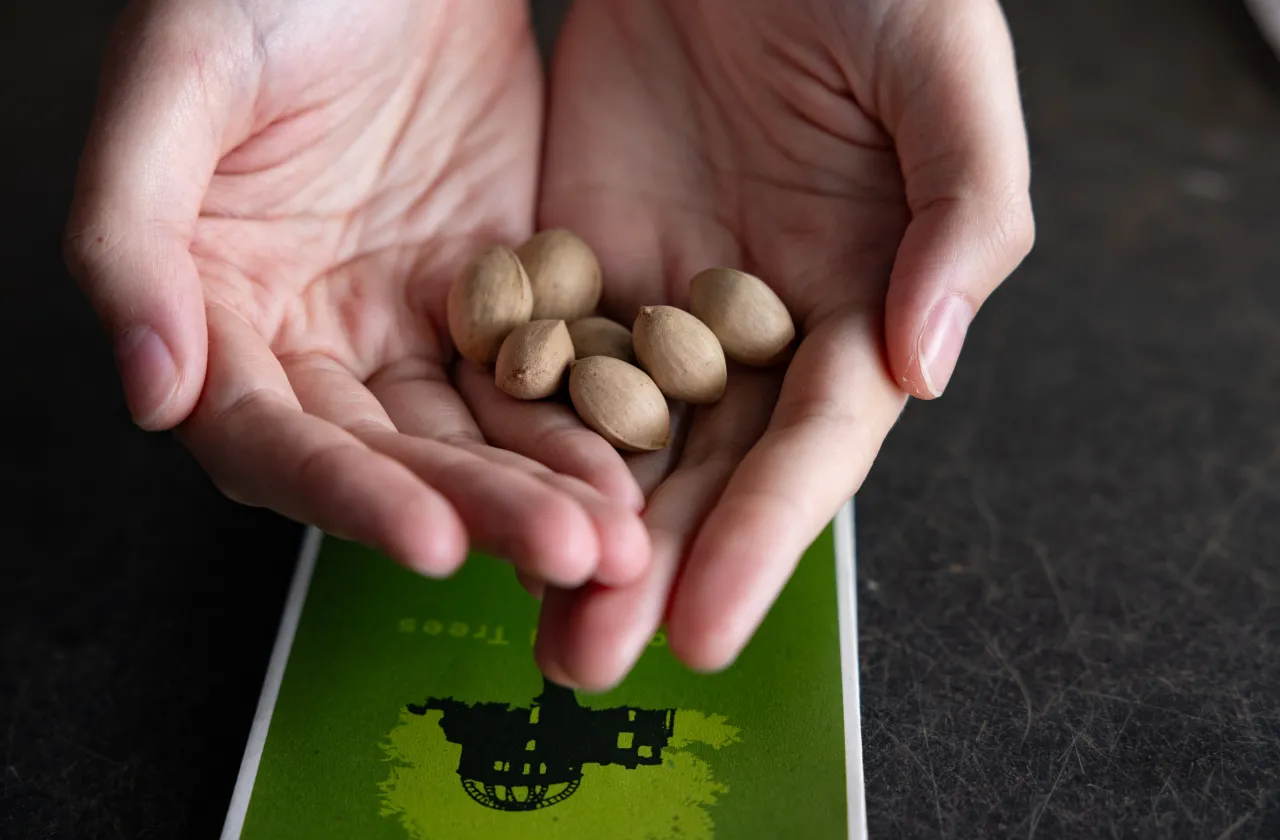The Secret Life of Smith Compost
Sustainability
How does the college’s organic waste become electricity? A group of students decide to find out.
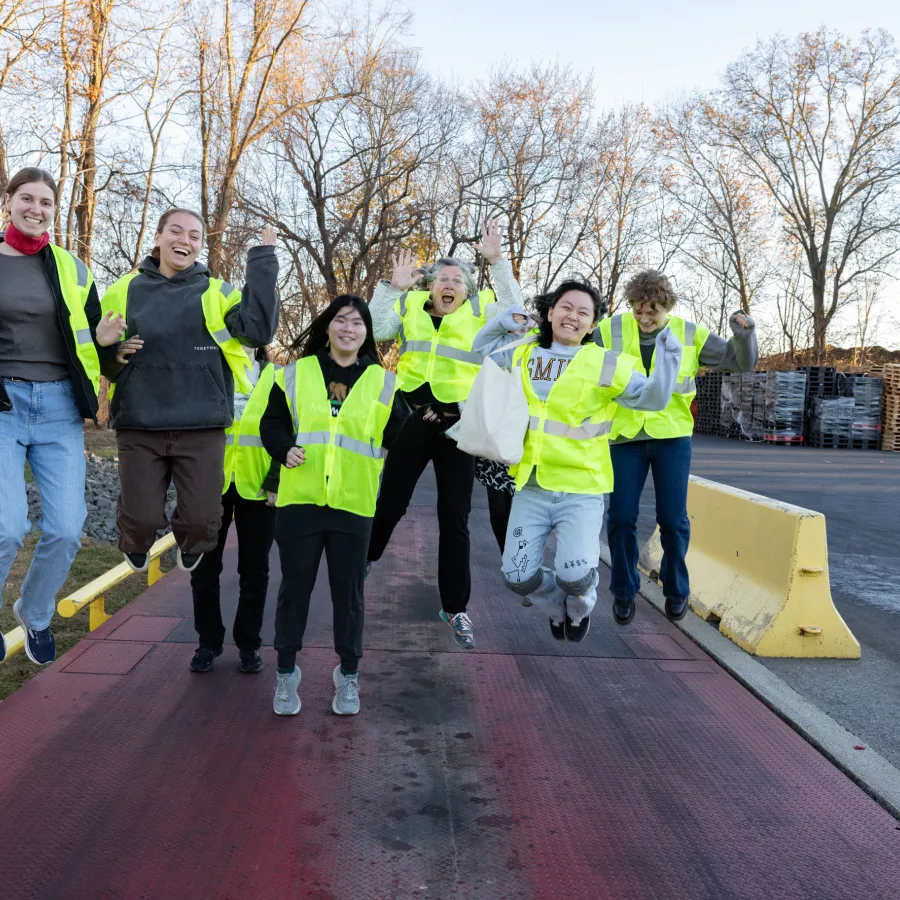
Photos by Jessica Scranton
Published February 10, 2025
Plant manager Abe Marciniec opens the doors to the packing facility and turns to the group of nine Smith students. “Enjoy the smell,” he says cheerfully, leading them inside.
The group marches into the large, open warehouse of Vanguard Renewables. Inside the building, crates of molding strawberries, bales of expired yogurt cups, and boxes of out-of-date wine are piled next to a giant, churning pit of machinery. Marciniec activates the quick-lift bay doors that dump trucks and flatbeds use to deposit their loads of expired food.
“You’ll feel an air curtain come down,” he notes. “This is intentional to keep the smell inside. We’re really big on our odor control—and so are our neighbors. Nobody wants to smell any of this. We don't even want to smell this.”
The group of Smithies does not seem daunted. After all, they have signed up for a tour of the Agawam-based facility just for this: a super up-close and detailed look at exactly where their compost and other organic waste goes when it leaves the Smith College campus. This is their chance to see the process—and to learn more about how those potato peels, orange rinds, and tea leaves transform into electricity.
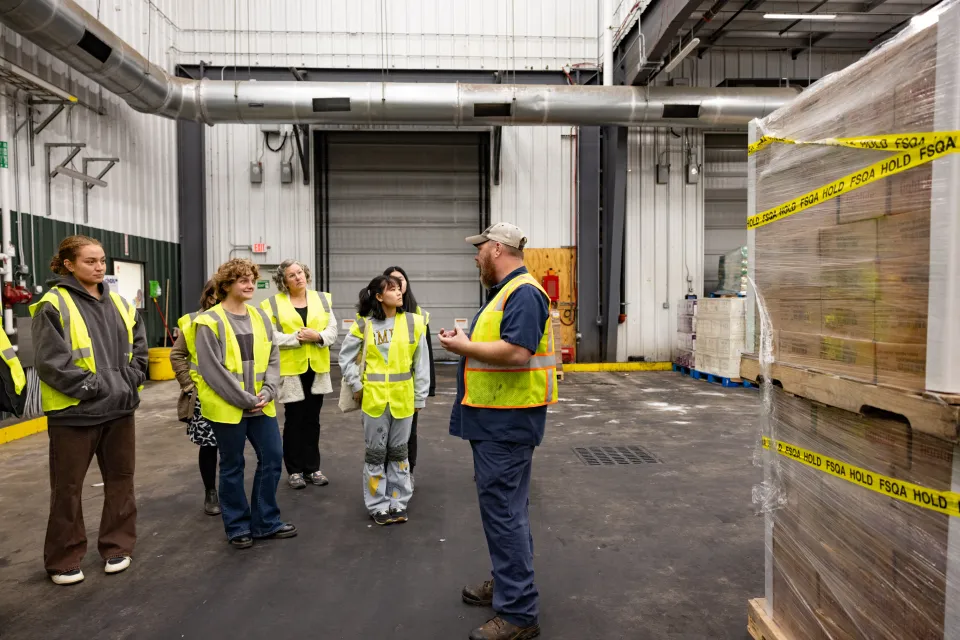
Smith started contracting with Vanguard Renewables in 2023 as part of an effort to expand efforts to keep much of the college’s food waste out of landfills. The effort has only now reached a level where students have been invited to see the process more closely. This fall, students gathered for their first tour, which was organized by Smith’s Center for the Environment, Ecological Design and Sustainability (CEEDS).
CEEDS is offering another field trip this spring to the depackaging plant, this time with an additional stop at one of the area farms where the organic waste is mixed with manure and converted into electricity. Students can join the [enviro] listserv to get trip details and sign up.
The problem of what to do with the tons of food the college discards has been an ongoing one. Smith College Dining Services provides about 6,200 meals a day in 11 dining rooms and also supplies two on-campus cafés. Food that is not served—and has maintained essential hygienic standards—can be reused in a different meal or collected by the student-run Food Rescue Network (FRN). In its first two years, starting in 2022, FRN redistributed 29,752 pounds of surplus food to area shelters and food banks.
Even diverting that amount still leaves food that is served but uneaten—as well as the scraps that come from food preparation and the rinds, shells, and other biodegradable (but not edible) elements. These are disposed of in large outdoor containers. Smaller compost bins are also strategically placed around dining halls and cafés to collect leftovers that diners want to discard.
In 2015, Smith started partnering with Bridgmont Farm in Westhampton to dispose of all of this organic waste and divert it from landfills. But by 2019, the college’s output had exceeded the farm’s capacity. The college tried using other facilities, such as 360 Recycling LLC in Westfield, but had issues with both capacity and logistics. Driving to a distant location to dump the waste ate up huge amounts of Smith staff time.
“I lost my drivers for three hours a day, every day, pretty much,” says Facilities Grounds Operations Foreman John LaBrie, who oversaw the efforts. If his staff started dumping a pile of organic waste and realized that trash like boxes, trays, or utensils had been mixed in, they would stop to fish it out in the hopes that the organic matter would still be clean enough to compost. These efforts, although valiant, made their daily tasks take even longer.
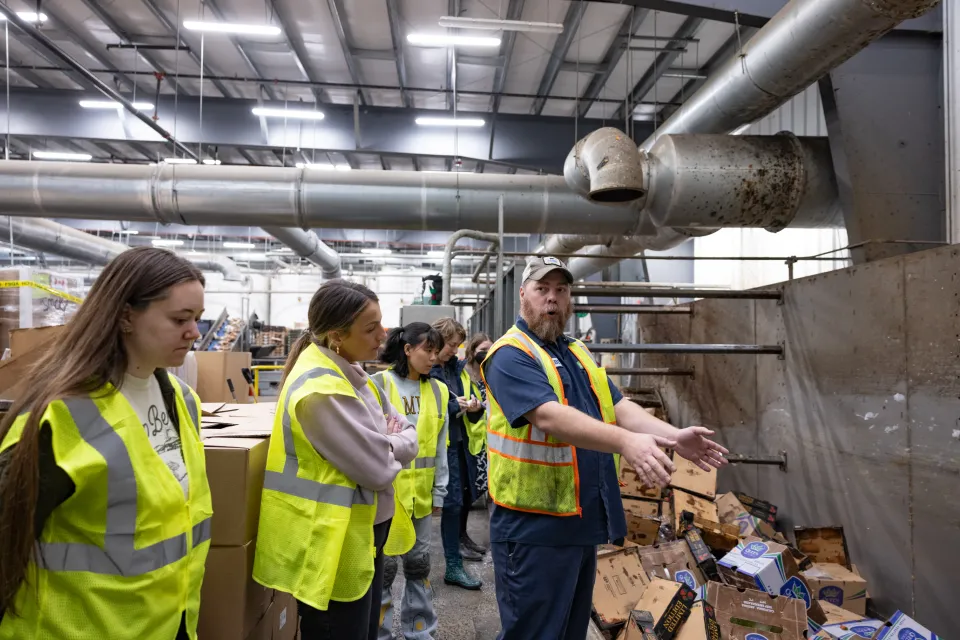
In 2023, when Smith switched to Vanguard, the college was able to purchase a large compost compactor to increase storage capacity of organic waste on campus. Since Vanguard’s Agawam facility is also a depackaging plant, it’s built to handle loads that require some separation of organic matter from everything else. So even if a few nonorganics get mixed in with the compost, the facility can handle it.
That solves the long-standing dilemma people can have about what to include or remove from compost, says CEED’s Assistant Director of Sustainability Becca Malloy.
“I like that Vanguard’s depackaging plant takes away the compost mystery,” says Malloy. “We don’t have to worry about one little straw that may have fallen into the bottom of the bin. Vanguard shows us where it goes, how it is separated, and that a load of compost isn’t going to be thrown away because of one person’s little straw. That gives us more faith in the system."
The college now sends 250 to 300 tons a year to the Vanguard facility, at a cost of $90 per ton. The switch has reduced both vehicle wear and tear and staff hours, which means “we’re spending less money on more compost than we ever have,” says LaBrie.
Still, challenges remain. Since they have to visit multiple dining halls, facilities staff collect organic waste from 7 a.m. to 9 a.m. every day and then clean out their dump truck (Smith only has one) to start on trash collection. LaBrie notes that even with dining staff and community members trying to be mindful of their consumption, some houses can produce up to 90 gallons of organic waste each day. As the college works on the bigger issue of cutting back on what it discards, LaBrie believes the new partnership with Vanguard is a good first step.
“I see the end result and I think it’s well worth it,” he says, “And [the food] is being turned into something useful.”
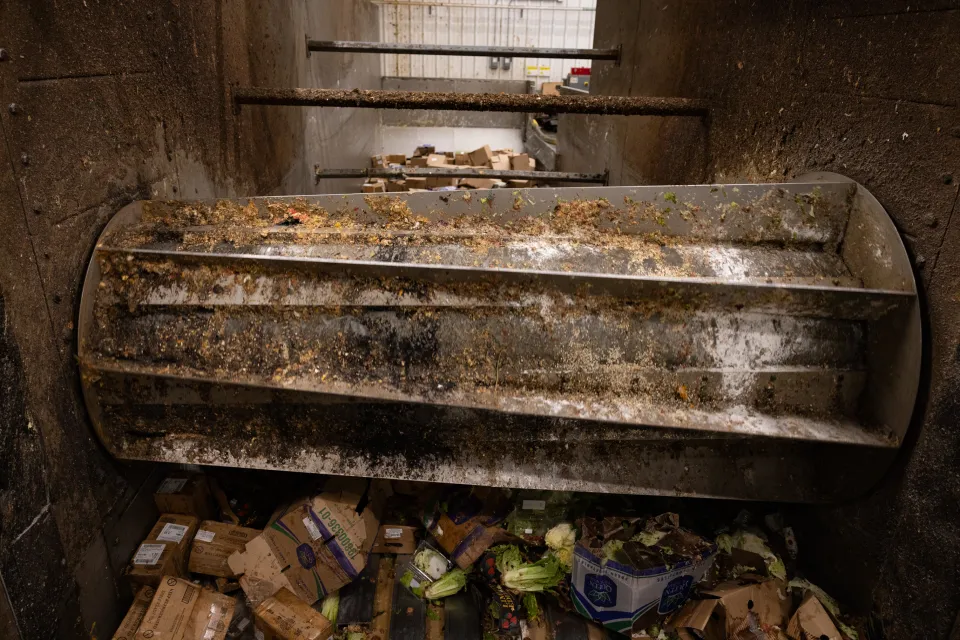
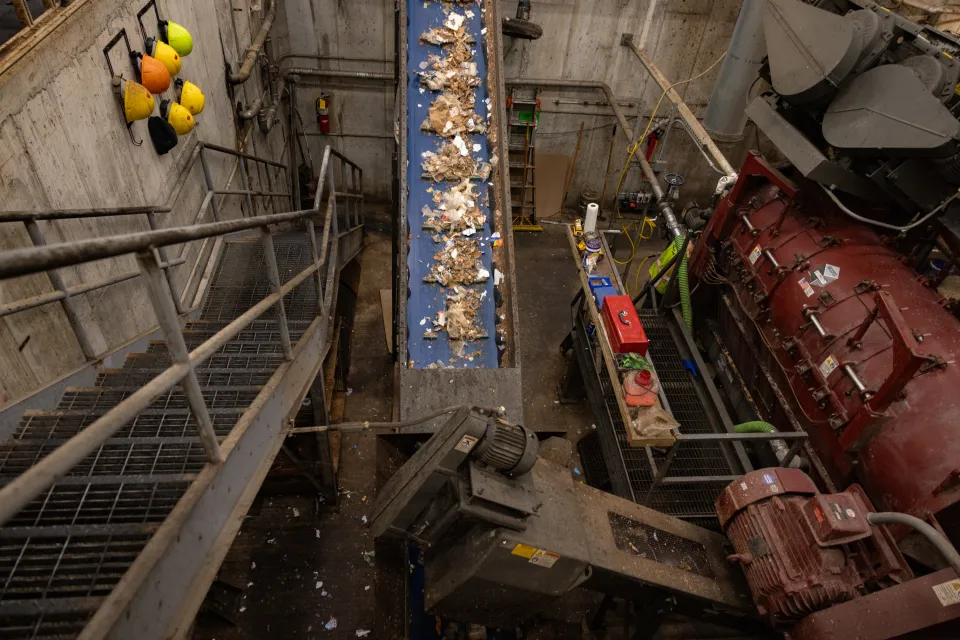
Creating transparency in the process and educating students is another large part of the ongoing efforts. That’s why the first tour of the Vanguard facility was high on the agenda for CEEDS.
The November tour starts in the main office of the Vanguard Renewables depackaging facility, where all the visitors—including the students, Malloy, CEEDS Administrative Coordinator Deirdre Quirk, and Vanguard Organics Market Manager Katie Silegy—don neon green reflective vests.
The Smithies are there for a range of reasons, but Weina Lu ’28 wants to solve a mystery that has become a good-natured argument among her housemates. What happens to the Duckett House compost?
“I came on this field trip because I’ve always wondered where our food waste and compostable products go after we scrape them off our plates or toss them in the dining halls,” says Lu. She will eventually create a short video to help other students understand the behind-the-scenes process.
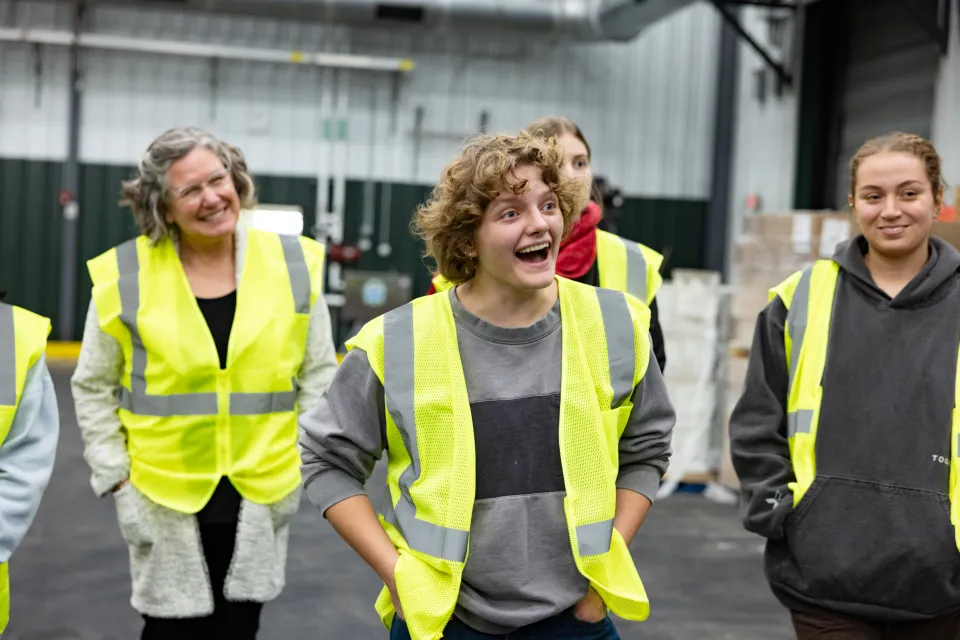
The Agawam facility—a pilot site based on similar facilities in Europe—receives between 6,000 and 8,000 gallons of food waste every day, from a range of clients. The process of turning those leftovers into energy is both time-intensive and relatively straightforward: The food has to be separated from everything else and then broken down into a liquid slurry.
Of course, doing that is easier said than done. Materials come from a wide variety of companies and organizations—supermarkets, wholesalers, trucking companies, elementary schools, and colleges like Smith—in an enormous range of containers. There are pallets of bottles with labels printed incorrectly, tiny yogurt cups discarded after being stored at two degrees over the ideal temperature, and crates of molding strawberries.
As he leads the students around, Marciniec notes that the Smith “product” is relatively easy to process because it’s food waste free of metal utensils and other items, which can bring the giant machines in his facility to a grinding halt.
The group stops to peer down at a giant machine nicknamed “Thor,” in honor of its hammering mill machinery. Inside, the huge hammers churn and smash packages, releasing their food contents. Battered containers are then shuttled up and out for recycling or trash. The students examine what remains: a grayish slurry of food pulp and liquid waste that will be transported to nearby large-scale dairy farms to be mixed with cow manure and housed in enormous on-site anaerobic digesters. As microbes break down the mixture, the resulting methane is captured and turned into electricity. Any leftover organic material becomes fertilizer, which is spread back on the farm fields to help grow the next silage crop.
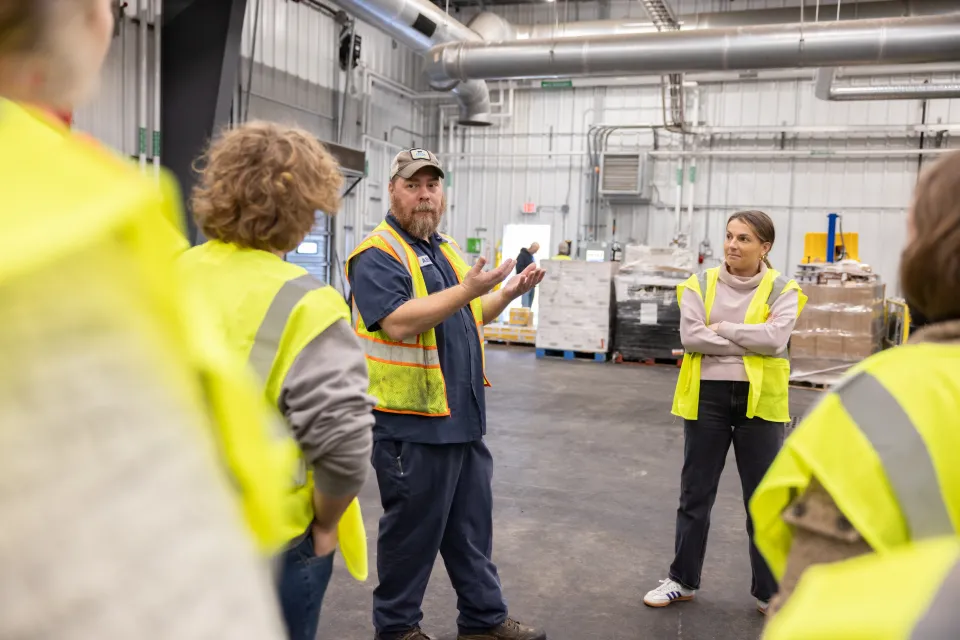
As the tour comes to a close, the group starts to wonder about the scale of the depackaging plant and the sheer amount of material being processed.
“Does working here change what you buy in the stores?” asks Staff Photographer Jess Scranton.
“It changes your [out]look on America and us as a country,” says Marciniec. “When you work in a place like this, you see … people are throwing away food every day. And they’re throwing it away sometimes for reasons that don’t even make sense.”
Marciniec believes one of the only solutions is to reduce the amount that’s thrown away. He turns to the Smithies. “Maybe your generation can get us there,” he says, ”but we’re not there.”
